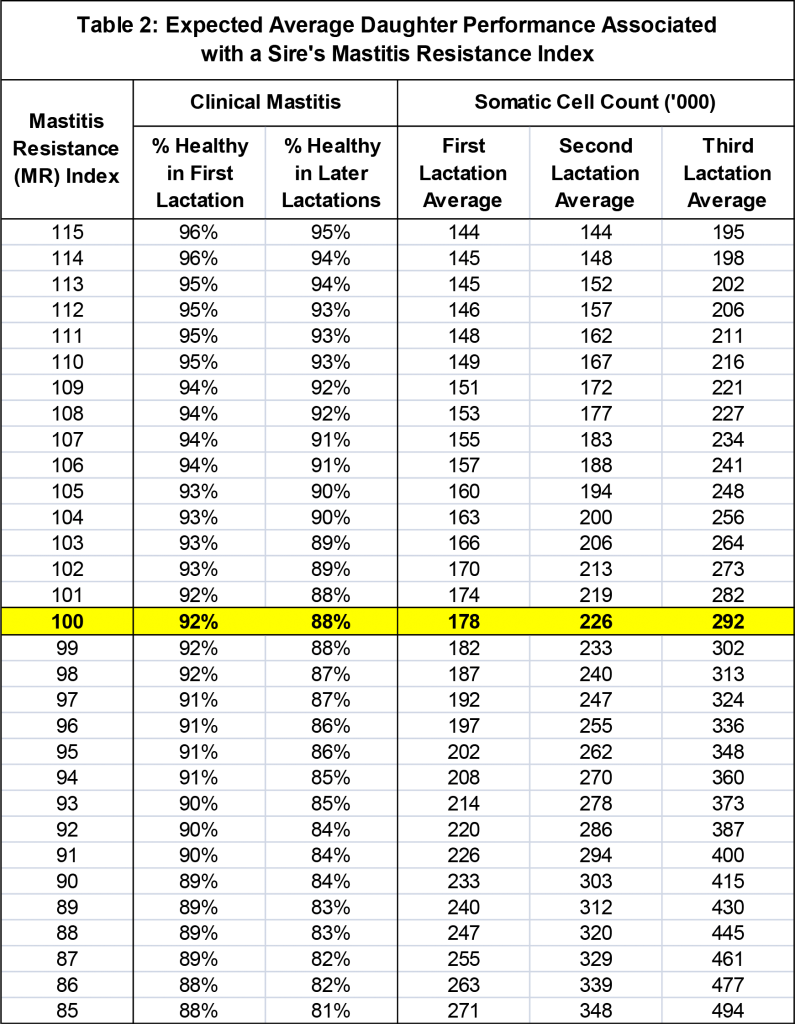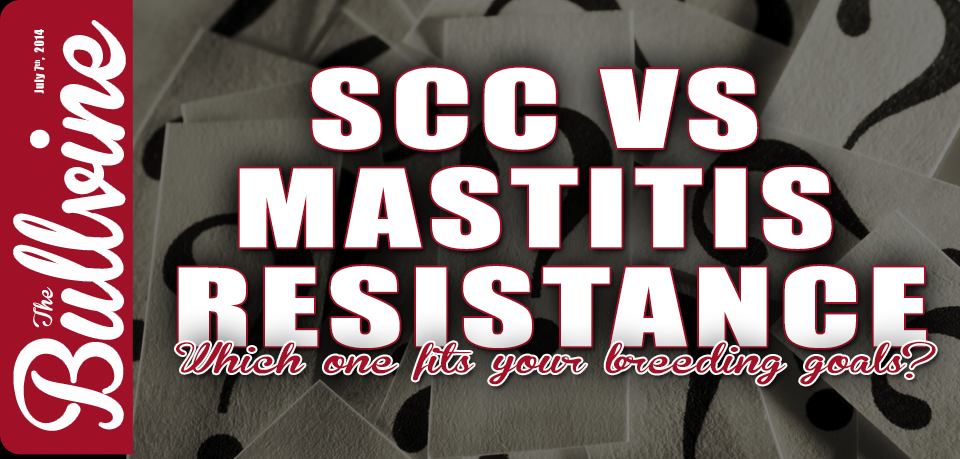Dairy farmers want to avoid mastitis. It’s expensive – antibiotics, lost milk, extra staff time and lost genetics. Furthermore every dairy operations targets to have the food safety and milk product quality that consumers want and deserve. When SCC testing through DHI and subsequently SCC sire proofs became available significant improvement tools were available to dairy cattle breeders. Breeders knew from experience that some cows and cows families were more prone to getting mastitis. Although somatic cell information was a great first step, it wasn’t the total answer. Breeders questioned if SCC could be too low and if very low SCC cows actually have less ability to fight off infectious agents that cause mastitis. So breeders asked the researchers to investigate further.
Canadian Stats Lead to First Mastitis Resistance Ratings
At CDN, breeders and researchers put their heads together in 2007 and decided to ask breeders to report on eight cow health events (Read more: Is Animal Health Important to You?) to get the necessary field information on incidences. For more than five years, 40% of Canadian milk recorded herds have been reporting if a cow has had mastitis and any of the other seven health diseases since her last test day. That information plus her somatic cell scores and genomic profile were combined to develop animal genetic ratings for mastitis resistance that will be released for the first time by CDN (Read more: Mastitis Resistance Selection: Now a Reality!) on August 12, 2014. By using the negative of a mastitis case plus the actual facts on SCC and genomic profile, a new tool will be in the hands of breeders to use in making their selection decisions.
The study of the data collected showed that Mastitis Resistance has a heritability of 12%, similar to the heritability of an important trait like feet and legs and therefore it is possible to improve it genetically. As many discerning breeders suspected, the study showed only a moderate association between a positive genetic rating for SCC and incidence of clinical mastitis in first lactations (44%) and later lactations (58%). SCC genetic indexes are an indication of few mastitis cases but a considerable distance from the accuracy breeders expect.
Mastitis Resistance Sire Proofs
After developing the formula calculating genetic evaluations for mastitis resistance, CDN researchers then compared the results to existing known facts. It was found that Sire Proofs for SCC have a correlation of 80% with Sire Proofs for Mastitis Resistance. That is moderately high but not perfect. And Sire Proofs for Mastitis Resistance were strongly associated with incidence of mastitis in first lactations (85%) and later lactations (90%). Note that the associations for first and later lactations are closer for Mastitis Resistance than they are for SCC.
When CDN publishes the genetic indexes in August, the scale will be 100 for average with a standard deviation of +/- 5. The following table produced by CDN is very interesting.

Source: Mastitis Resistance Selection:
Now a Reality! CDN July 2014
This table provides for breeders some information details for both clinical mastitis (actual mastitis cases) and sub-clinical mastitis (SCC). On a population wide basis breed average bulls (100) for Mastitis Resistance will have 92% healthy daughters with an average SCC of 178,000 in their first lactation. In later lactations an average bull will have 88% healthy and an SCC of 226,000 in second lactation and 292,000 in third lactation. It should be noted that if a bull is used that only has a 91 rating, breeders can expect his third lactation daughters to average 400,000 SCC. In many countries 400,000 is now, or soon will be, the maximum allowable for milk to be accepted for shipment off-farm. As mentioned the numbers in this table are for an average herd. Individual breeders with less mastitis incidence can expect healthier animals and lower SCC average. However herds, with higher than average mastitis incidence, can expect poorer results.
In August Mastitis Resistance sire proofs will be published by CDN for Ayrshire, Holstein and Jersey breeds. Due to the large number of Holstein bulls with proofs and genomic profiles, CDN will publish genomic evaluations for Mastitis Resistance for the Holstein breed.
The Bullvine Bottom Line
CDN Mastitis Resistance genetic indexes will increase the accuracy of selecting animals for their ability to avoid the significant cost of udder disease. It is the tool that breeders have been asking for. It came about when breeders, researchers and genetic evaluation officials collaborated. Look for bulls or cows that are 105 or higher before considering them to be significant breed improvers.
Get original “Bullvine” content sent straight to your email inbox for free.
[related-posts-thumbnails]


















Leave a Reply
You must be logged in to post a comment.